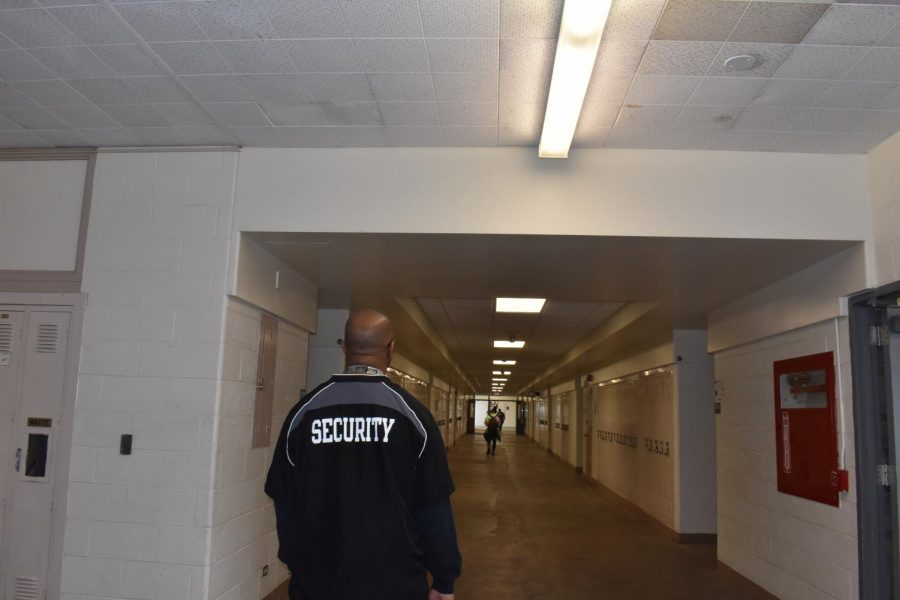Sweeping attendance issues out the door
West adopts new effort to combat tardiness
Administrators emplace a hall sweep that helps with kids in the halls skipping class. The halls sweeps are random and catch students, putting them in one of five rooms then further consequences will be decided.
April 25, 2019
The administrators at West have launched a new effort to help keep students in their classrooms and out of the halls. This method is called the lockout system. The lockout system was used this year to prevent late and tardy students. Administrators, teachers, and students are all affected by this new policy and have opinions on how to bring about these new changes effectively.
Associate Principal Charlie Driscoll advises the lockout system which was put into place at the beginning of the school year. It works when a student is marked absent from their class and is still in the building. They will then be locked out of their next class, and sent down to the office. Then they will proceed to talk to a principal and explain why they were not in class. Driscoll’s opinion of the lockout system is that it is beneficial. He states that principals are learning why students are in class as well as missing. The goal of the new system is that there are more students in class being educated.
“Students are in school to learn and if they’re not in school, then they can’t learn, so we aren’t having as much learning going on. Students aren’t achieving what they could if they’re not going to class,” Driscoll said. “We have too many kids that don’t take attendance seriously.”
For students that are skipping or late to class there can be a negative outcome for both the student and the teacher. Health teacher Ryan Shelman explains that it is frustrating to catch up students that are tardy, and it is also distracting to him as a teacher and to the learning of other students in class. Shelman´s opinion on the lockout system is that it is cutting down on the amount of students in the hallway, but it all comes down to the students themselves. Students ultimately make the choice if they want to go to class and get an education, he says.
“I feel like the students that value their education are in class. We have a lot of great students at West, but we also do have that small percentage that struggle to get to class on time,” Shelman said. “The lockout system is cutting down on a lot of those tardies, but the students definitely have to value their own education.”
Sophomore Durel Fitts feels there could be a better solution than the lockout system because it is taking time away from class. He wishes that teachers would talk to kids to find out why they are not coming to class and make a change to the lockout system.
“I do not like the lockout system because we have to leave out of our class just to talk to someone and then wait 20 to 35 minutes,” Fitts said. “It is not beneficial and it takes away from time in our class.”
West has 1,600 students, and there are 97 percent of students that are in class, yet it is hard to ignore the three percent that choose not to get to class. Driscoll says the goal is to have 100 percent of kids in class, and with these new policies in place, it is hoped that the goal is met.
“We want the kids to understand that it’s kind of a life lesson that you have to be places on time. Like if you go to your job late you could get fired. Well we’re not going to fire students, but we have to teach them this life skill of being on time,” Driscoll said.







